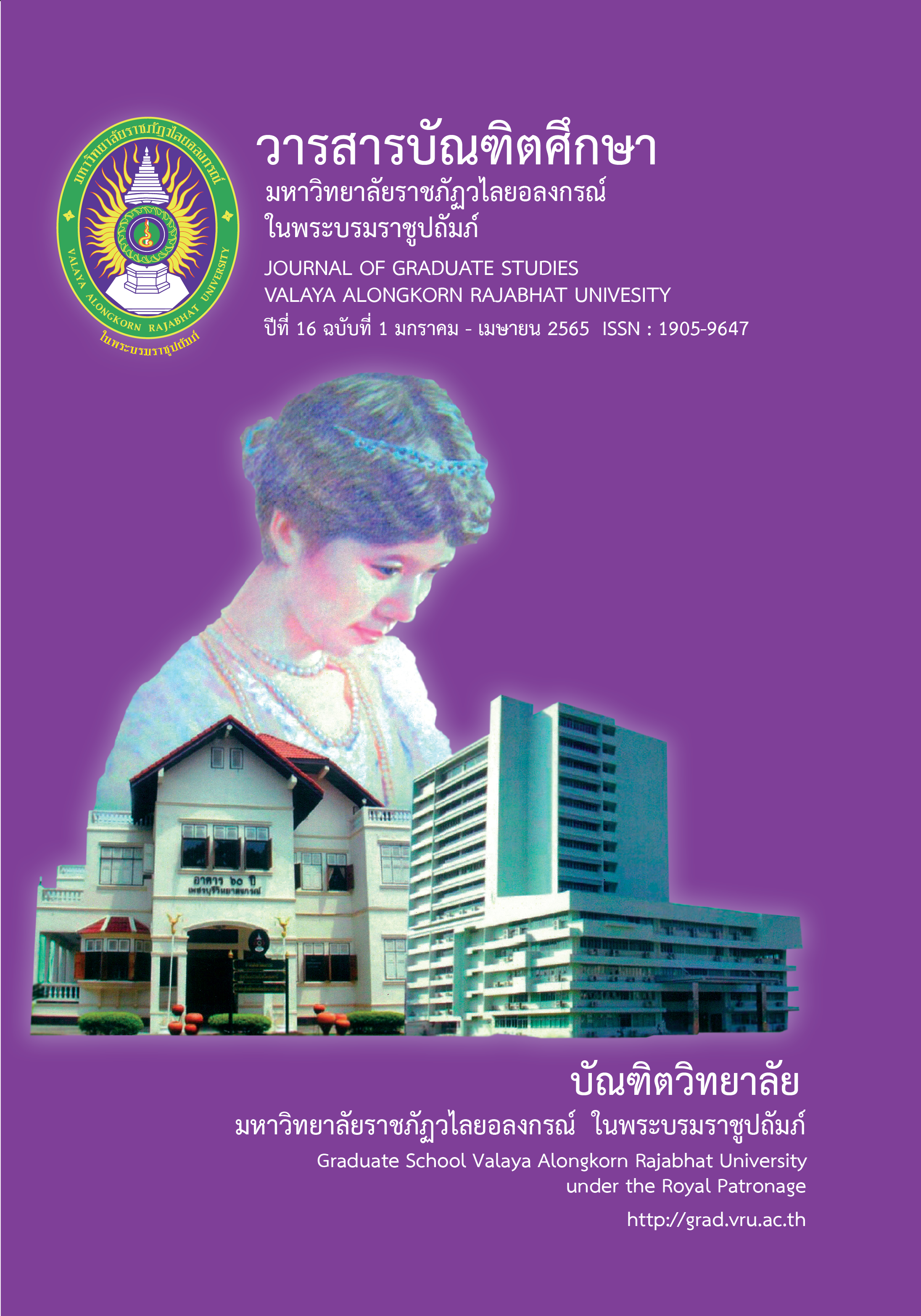EMPLOYEES’ FRAUD DRIVE THE CASE STUDY: LOGISTIC SERVICE INDUSTRY IN THE EASTERN ECONOMIC CORRIDOR
Main Article Content
Abstract
This paper aims 1) to study the driving factors of fraud in organizations according to the fraud triangle theory and to test the relationship of such factors, and 2) to develop and check for consistency of the fraud triangle structural equation model with empirical data. The data were collected from a sample of 362 executives, finance and accounting staffs. The implement used for measurement was a questionnaire with seven-point scale, and the data were analyzed using structural equation modeling.
The results indicated that; 1) pressure opportunity and rationalization are driving factors of fraud in organizations and positively related, and 2) fraud triangle structural equation model corresponded to the empirical data, where RMSEA =0.042, TLI =0.967, CFI =0.974, CMIN/df =2.163, NFI =0.951, p-value=0.061, which met the criteria set for the results of variable analysis. The findings identify the fraud factors which can be adapted to reduce corruption in the organizations.
Article Details

This work is licensed under a Creative Commons Attribution-NonCommercial-NoDerivatives 4.0 International License.
บทความทุกเรื่องได้รับการตรวจความถูกต้องทางวิชาการโดยผู้ทรงคุณวุฒิ ทรรศนะและข้อคิดเห็นในบทความวารสารบัณฑิตศึกษา มหาวิทยาลัยราชภัฏวไลยอลงกรณ์ ในพระบรมราชูปถัมภ์ มิใช่เป็นทรรศนะและความคิดของผู้จัดทำจึงมิใช่ความรับผิดชอบของบัณฑิตวิทยาลัย มหาวิทยาลัยราชภัฏวไลยอลงกรณ์ ในพระบรมราชูปถัมภ์ กองบรรณาธิการไม่สงวนสิทธิ์การคัดลอก แต่ให้อ้างอิงแหล่งที่มา
References
Abdullahi, R., Mansor, N. & Nuhu, M.S. (2015). Fraud triangle theory and fraud diamond theory: Understanding the convergent and divergent for future research. European Journal of Business and Management, 7(28), 30-37.
Bentler, P. (1992). On the fit of models to covariance and methodology to the Bulletin. Psychological Bulletin, 112(3), 400-404.
Browne, M. W. & Mels, G. (1990). RAMONA user's guide. Ohio: Department of Psychology, Ohio State University.
Chaichan, T. (2012). kānčhatkān lōčhittik samrap kānthō̜ngthīeo nai ʻamphœ̄ wang nam khīeo čhangwat Nakhō̜n Rātchasīmā [Tourism logistics management for Wang Nam Kiew district in Nakhon Ratchasima Province] (Research report). Thailand: Suranaree University of Technology Intellectual Repository.
Cressey, D. R. (1953). Other people’s money: a study in the social psychology of embezzlement. Glencoe, IL: The Free Press.
Fatima, J. K. & Razzaque, M. A. (2014). Service quality and satisfaction in the banking sector. International Journal of Quality & Reliability Management, 31(4), 367-379.
Hair, J. F., Babin, B. J., Anderson, R. E. & Black, W. C. (2018). Multivariate data analysis. (8th ed). London, UK: Cengage Learning EMEA.
Hooper, M. J. & Fornelli, C. M. (2010). Deterring and detecting financial fraud: A platform for action (Research report). United States: The Center for Audit Quality.
Howe, M. A. & Malgwi, C. A. (2006). Playing the ponies: A $ 5 million embezzlement case. Journal of Education for Business, 82(1), 27–33.
Hu, L. T. & Bentler, P. M. (1999). Cutoff criteria for fit indexes in covariance structure analysis: Conventional criteria versus new alternatives. Structural Equation Modeling, 6(1), 1-55.
Kesang, P. (2016). kānwičhai patibatkān [Action Research]. Bangkok: Chulalongkorn University Press.
Kline, R. B. (2011). Principles and practice of structural equation modeling. (3rd ed). New York: The Guilford Press.
Narodomkul, P. & Rodwarn, P. (2011). kān thutčharit khō̜ng phanakngān nai ʻongkō̜n thurakit [Corruption of employees in business organizations]. Chulalongkorn Business Review, 33(130), 1-13.
Panyorattaroj, S. (2016). kānčhatkān lōčhittik thī mī phon tō̜ khwāmsāmāt nai kān khǣngkhan khō̜ng phūprakō̜pkān phalittaphan klum khrư̄angpandinphao tambon ko̜ kret ʻamphœ̄ Pākkret čhangwat nonthaburī [Logistics management relate to a competitive advantage of the entrepreneur pottery industry in Tambon Ko Kret, in Pak Kret District, Nonthaburi]. Journal of Humanities and Social Sciences Rajapruk University, 2(2), 91-100.
Rae, K. & Subramaniam, N. (2008). Quality of internal control procedures: Antecedents and moderating effect on organisational justice and employee fraud. Managerial Auditing Journal, 23(2), 104-124.
Srivastava, R. P., Mock T. J. & Turner, J. L. (2009). Bayesian and belief-functions formulas for auditor independence risk assessment. International Journal of Auditing, 13(3)162-183.
Wilson, I. (2006). Regulatory and institutional challenges of corporate governance in post banking consolidation Nigeria. NESG Economic Indicators, 12(2), 55-63.


